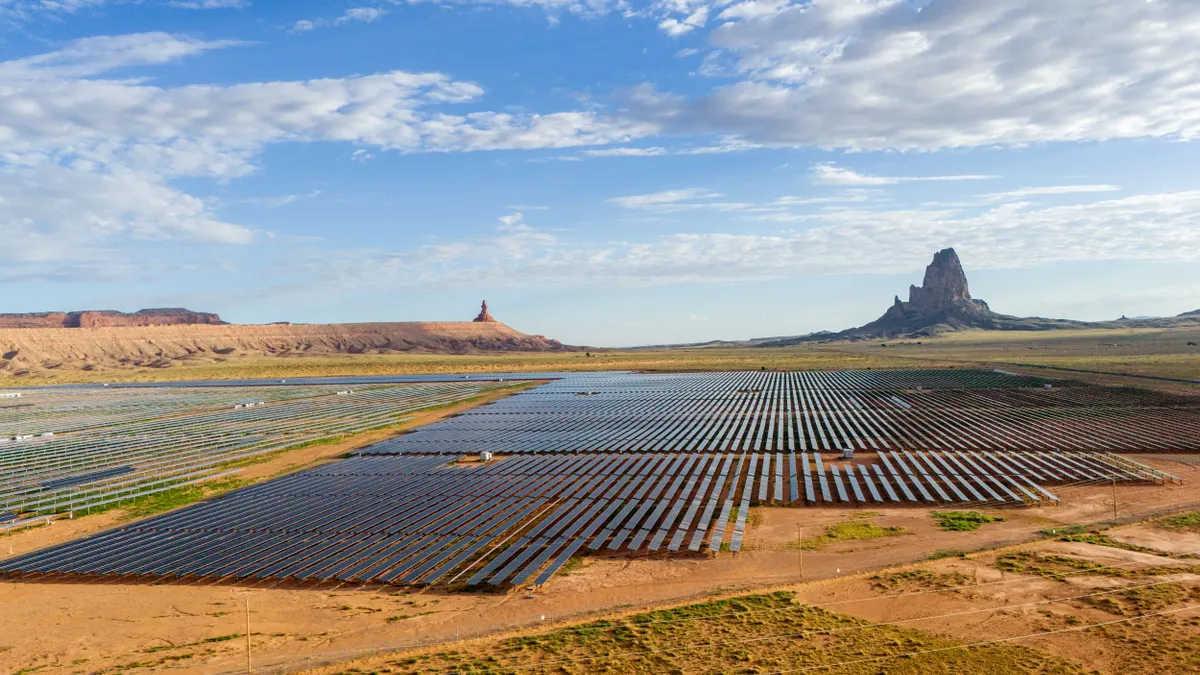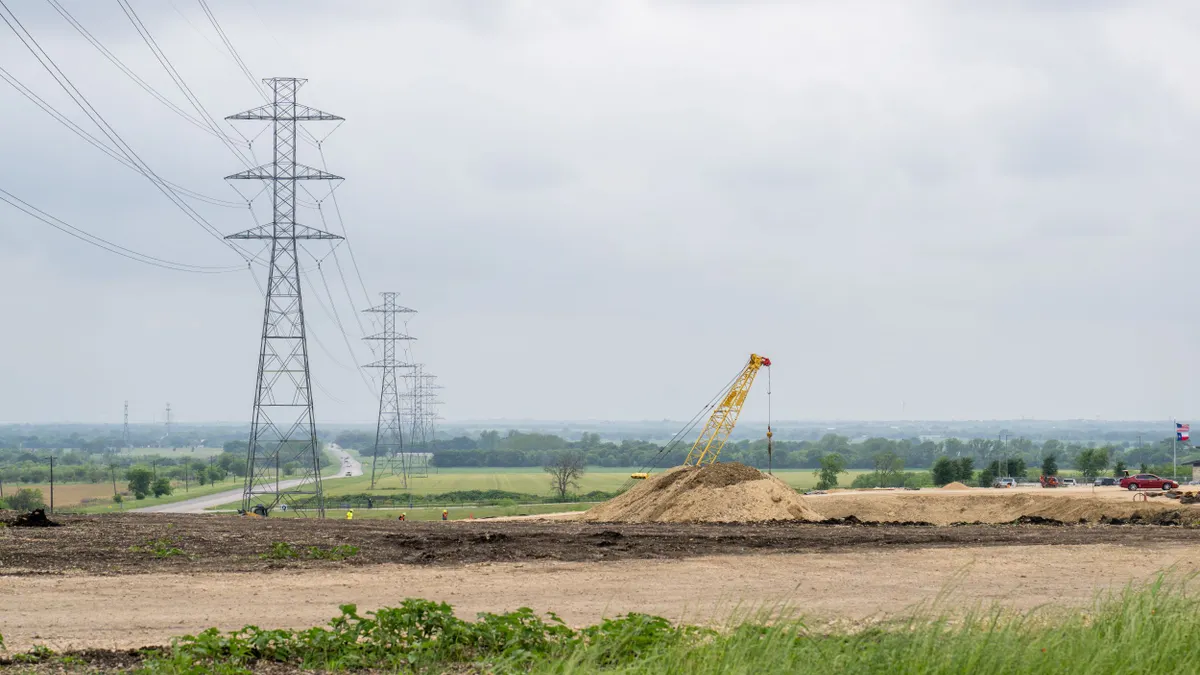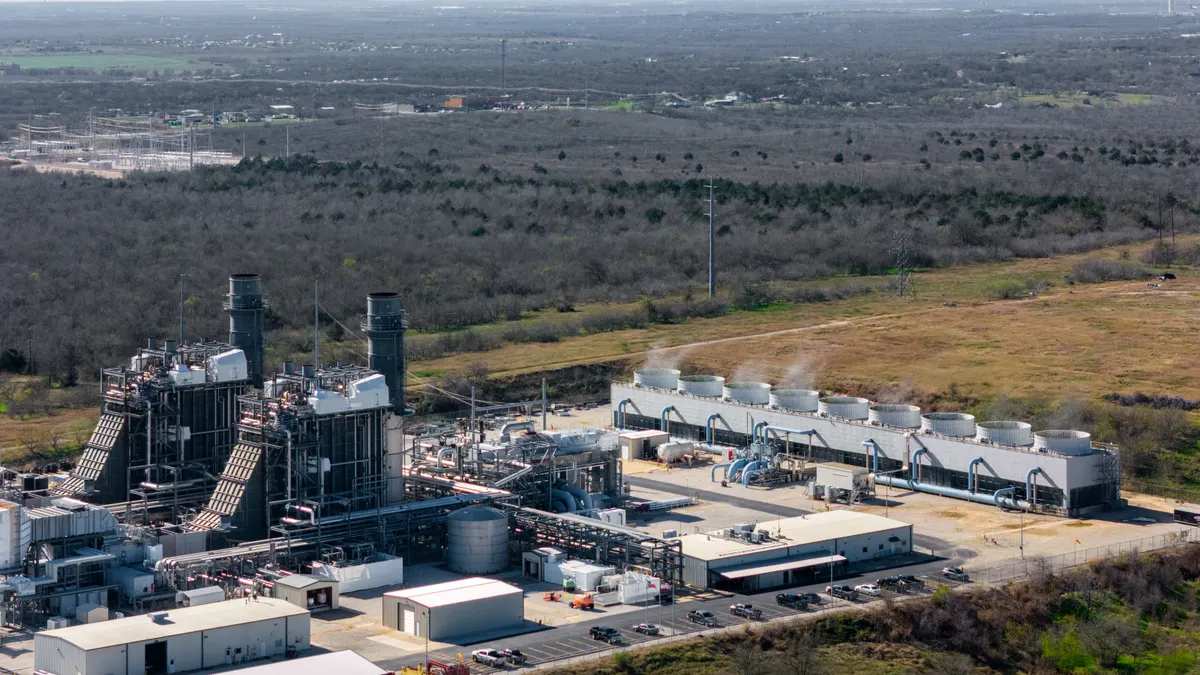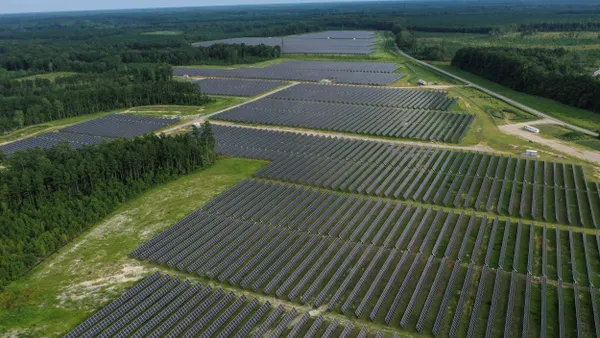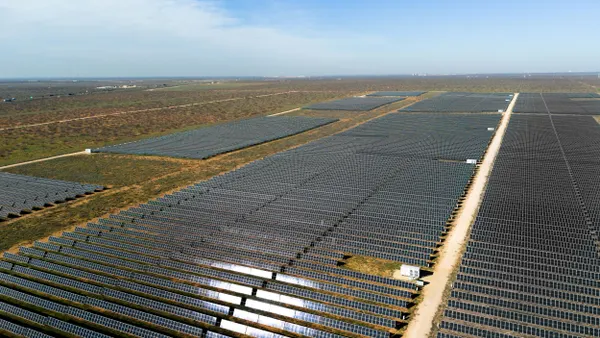Dive Brief:
- U.S. utilities and power plant developers added about 12 GW of new generation resources between January and April of this year, compared to 11 GW over the same period last year, according to the latest monthly infrastructure report from the Federal Energy Regulatory Commission.
- The vast majority of that generation — some 9.5 GW — was solar, trailed by wind with 2 GW and 500 MW of gas.
- “High probability” additions by April 2028 include 90 GW of solar, 23 GW of wind and 19.5 GW of gas, according to the report. It also projected the likely addition of 631 MW of hydropower and 92 MW of geothermal steam.
Dive Insight:
The report showed the continued dominance of solar in new generation capacity amid robust demand growth projections.
That could change, however, as the Republican tax cuts and spending bill take effect. The law signed by President Donald Trump on July 4 dramatically cut incentives for wind and solar, phasing out tax credits and imposing restrictions on the types of projects that qualify. Trump followed that with an executive order instructing the Treasury Department to take a narrow approach in its interpretation of the law regarding wind and solar.
The country added 62.5 miles of transmission lines from January to April, 2025, including, most recently, Entergy Louisiana’s 1.8-mile, 500-kV Wise-Bayou Labutte transmission project.
The report did not include a breakdown of transmission built over the same period last year. In total, grid operators added nearly 1,700 miles of transmission in 2024, about a third of it high voltage 500 kV.
FERC’s report follows a separate analysis from the U.S. Energy Information Administration that estimated solar generation would rise by a third this summer.
“By summer 2026, we forecast solar generation will grow by another 19% to 147 BkWh, which means solar would surpass wind to become the leading source of renewables generation during the summer,” the EIA said.
While the curtailment of clean energy tax credits is expected to slow solar deployment, alternatives like gas, which are favored by the Trump administration, face their own challenges, including high fuel prices and a years-long backlog for new gas turbines.
“With higher generation from renewables and increased fuel costs, we expect U.S. natural gas generation will fall by 4% in 2025 followed by an increase of 2% in 2026,” the EIA said.
The FERC report projected 24 GW of coal retirements and 14 GW of gas retirements through 2028.



